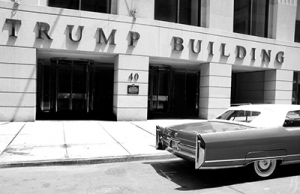Another approach more commonly used for income or investment properties is the capitalization rate. A capitalization rate or (cap rate) is the ratio between the net operating income (NOI) produced by an asset and the cost to acquire it (capital cost). It is widely used by investors because it provides a snapshot of the asset’s current financial health based on its cash flow and offers an indirect measure of how quickly the investment will pay for itself.
With cap rates the value of an asset is mathematically linked to the income it generates. Therefore as the value of an asset goes up, the amount of income it produces must go up as well if the same cap rate is to be maintained. What does this all mean?
How are property value, cap rates and cash flow related?
In real estate investment, real property is often valued according to projected capitalization rates. The capitalization rate or (cap rate) is the ratio between the net operating income (NOI) produced by an asset and the cost to acquire it (capital cost). It is widely used by investors because it provides a snapshot of the asset’s current financial health based on its cash flow and offers an indirect measure of how quickly the investment will pay for itself. An investor of real estate is no different than any other investor. He/she views money as a capital asset which when invested is expected to make more money. Each investor has a rate of return they expect to realize in their investments. In this article I will be showing how a savvy investor is able to increase property value, cash flow and cap rate through efficient use of capital outlay and knowledge of tenancies.
An investor buys an apartment building for $1,000,000. Upon purchase the building occupancy was 80% and was producing a net income of $100,000/year. The cap rate upon purchase was 10%.
The investor’s main goal upon acquiring the property is to increase the income and the value of the building. As the value of an asset goes up, the amount of income it produces must go up as well if the same cap rate is to be maintained. The investor begins with an evaluation of the physical condition of the building and performs a tenant study. The investor is aware that some leases are due to expire the month after the purchase and that if he/she do not attract new tenants the occupancy rate could fall to 60%.The investor also determines that the building is in need of certain upgrades and renovation and that depending on the type and quality of the upgrade, the investor could attract higher paying tenants and also increase tenant retention. The investor is savvy and has understands the balance between renovations and perceived value from a tenant’s perspective. After performing a through tenant and market study the investor decides to spend $100,000 in renovations. The repairs and beautification pay off and the investor is able to fill 40% vacancy with tenants that are paying 35% more rent and have signed lease agreements for longer periods of time with healthy escalations. The building becomes attractive to the public and the investor has a waiting list. After a year the investor has 100% occupancy and has filled the building with a better tenant mix and the property is producing $140,000/year. What has happened to the cap rate and value?
Without addressing the cost of money (mortgage and renovation loan payment) the investor’s initial capital cost has increased from $1,000,000 to $1,100,000. The cash flow however has increased to $140,000 and the building now has a cap rate of $12.7% (based on the initial purchase price and renovation). In choosing which property to purchase, the investor chose the one with the highest projected rate of return. His/her understanding of the market place, knowledge of tenancies and efficacy of capital expenditures led this investor achieve the following:
- The building has been improved and now attracts more tenants.
- The tenant mix has been improved
- Cash flow has been improved
- The building’s cap rate has increased
- The building’s value has increased.
The speed at which the property will pay for itself has also been accelerated
